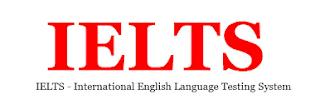International English Language Testing System is popularly know as IELTS. It is the most popular form of measuring the standard of individual person skilled in English Language. It is widely recognized assessment system and support most of the countries. Nowadays, we can apply even in American educational institutes (College & Universities) with IELTS (required band score).
Why IELTS is important?
Well, if you are planning to study or live in an English speaking country such as UK, Australia, New Zealand etc., it is important to have IELTS required score.
IELTS Test Score Measurement
IELTS measure the level of individual person's proficiency in English Language. There is no pass mark for IELTS. It measure the proficiency level from non- user band score 1 through to expert band score 9.
ILETS Test Format
There are two types of IELTS available, one is IELTS Academic and other is IELTS General Training. IELTS Academic is basically for education purposes whereas IELTS General Training is for professional/ skilled workers or migration purposes. It has 4 different modules-
Reading, Writing, Speaking and Listening. For both format Speaking and Listening are same, but, the reading and writing module is vary from Academic to General Training module.
Why IELTS is important?
Well, if you are planning to study or live in an English speaking country such as UK, Australia, New Zealand etc., it is important to have IELTS required score.
IELTS Test Score Measurement
IELTS measure the level of individual person's proficiency in English Language. There is no pass mark for IELTS. It measure the proficiency level from non- user band score 1 through to expert band score 9.
ILETS Test Format
There are two types of IELTS available, one is IELTS Academic and other is IELTS General Training. IELTS Academic is basically for education purposes whereas IELTS General Training is for professional/ skilled workers or migration purposes. It has 4 different modules-
Reading, Writing, Speaking and Listening. For both format Speaking and Listening are same, but, the reading and writing module is vary from Academic to General Training module.

Comments
Post a Comment